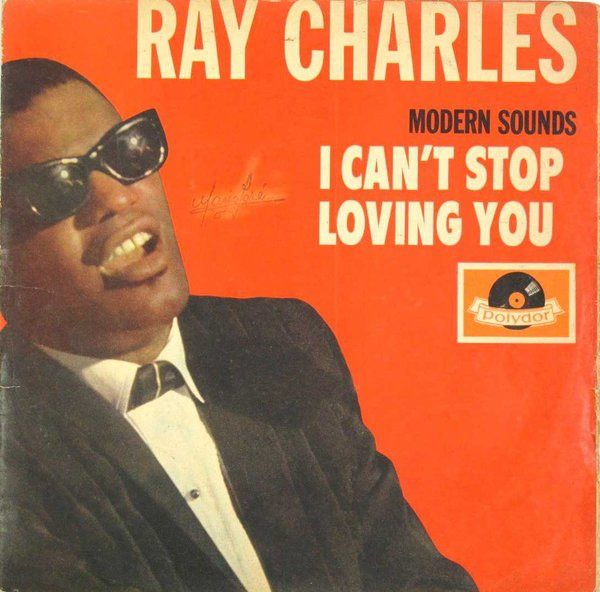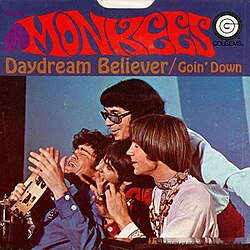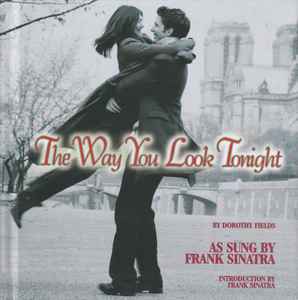 When The Rolling Stones released “Paint It Black” in 1966, they weren’t just offering another rock single to a rapidly shifting cultural landscape — they were bottling an emotional upheaval that mirrored the angst, confusion, and darkness of an entire generation. From its eerie sitar intro to the final frenzied drumbeat, the song wasn’t content to be a background soundtrack to the ‘60s — it became a psychological soundtrack, one that explored the darker corridors of the human experience at a time when the world itself seemed on the brink of collapse or transformation, depending on one’s perspective.
When The Rolling Stones released “Paint It Black” in 1966, they weren’t just offering another rock single to a rapidly shifting cultural landscape — they were bottling an emotional upheaval that mirrored the angst, confusion, and darkness of an entire generation. From its eerie sitar intro to the final frenzied drumbeat, the song wasn’t content to be a background soundtrack to the ‘60s — it became a psychological soundtrack, one that explored the darker corridors of the human experience at a time when the world itself seemed on the brink of collapse or transformation, depending on one’s perspective.
What makes “Paint It Black” so eternally gripping isn’t just its innovation or the unique instrumentation that distinguished it from the band’s previous hits — it’s that the song, at its core, feels haunted. It speaks not only of sorrow but of obsession, of existential despair, of the feeling that nothing — not even color — holds any comfort anymore. It’s a song that swirls with dread, but it’s not merely a dirge. It’s aggressive, propulsive, almost manic in how it tries to outrun its own grief. And that’s what made it resonate in 1966 and what continues to draw new generations into its dark spell.
The song was conceived during a period when the Stones were becoming increasingly experimental, both musically and thematically. The British Invasion was in full swing, but the Stones were never content to ride the same wave as their poppier peers. Where the Beatles leaned into psychedelia with colorful whimsy, the Stones always skewed edgier — bluesier, grimier, more confrontational. “Paint It Black” captured that ethos perfectly. It was a radical departure from their earlier rhythm and blues-based output, not just in sound but in attitude.
Brian Jones, whose influence on the band’s early sound is often underappreciated, played a pivotal role in the creation of “Paint It Black.” His use of the sitar — inspired, like George Harrison’s, by Ravi Shankar — gave the song its distinctive Eastern flavor. But Jones’s playing wasn’t used as mere embellishment or psychedelic seasoning. It was woven into the very DNA of the song, setting a tense, hypnotic mood that underpinned the entire track. The sitar in “Paint It Black” doesn’t suggest mysticism; it feels like a cry from another world, one not governed by light or logic.
Mick Jagger’s vocal performance is equally crucial. He doesn’t just sing the lyrics; he inhabits them, sounding alternately despondent and frantic. His voice carries the weight of someone who’s not just mourning a death, but unraveling because of it. “I see a red door and I want it painted black” isn’t merely a line about mourning; it’s about wanting to blot out all joy, to erase color itself because it no longer reflects the internal state of the narrator. The metaphors pile on — no flowers, no sunlight, no emotions — as the song becomes a descent into emotional isolation.
Keith Richards, meanwhile, anchors the song with a deceptively simple guitar riff, one that’s both driving and restrained. Charlie Watts’s drums offer a galloping momentum that never lets the listener breathe, while Bill Wyman’s bass lines slither underneath, subtle yet sinister. The production — handled by Andrew Loog Oldham — is crisp but shadowy, allowing each instrument to cut through the mix without diminishing the song’s overall claustrophobic atmosphere.
The result was one of the first truly dark mainstream rock songs, a single that topped the Billboard Hot 100 and UK Singles Chart despite — or perhaps because of — its unsettling content. This wasn’t a protest song in the traditional sense, nor was it a love song, a ballad, or a call to arms. It was a song about internal collapse, and it hit at a time when the outside world wasn’t exactly stable. The Vietnam War was escalating. Racial tensions were flaring. Psychedelic drugs were warping minds and boundaries. “Paint It Black” didn’t describe any of these things directly, but it channeled the chaotic energy of all of them.
That sense of universality is part of what has made “Paint It Black” one of the most enduring and culturally ubiquitous songs in the Stones’ catalog. Over the years, it has been used in everything from Stanley Kubrick’s Full Metal Jacket to TV shows like The Vietnam War documentary and Westworld, and even as the opening theme for Tour of Duty, a television series centered around the Vietnam War. Each time it’s used, it lends an instant emotional gravity, a kind of audio shorthand for darkness, despair, and unresolved trauma.
But it’s also worth noting how the song continues to evolve in the public consciousness. Unlike some ‘60s hits that feel trapped in their era, “Paint It Black” remains strangely timeless. Its themes of alienation, mourning, and emotional disintegration speak as directly to today’s world — with its mental health crises, political polarization, and societal unrest — as they did to the 1960s. Young people today still find themselves resonating with the song’s opening lines, still see themselves in the desire to have the world match the bleakness inside.
Live versions of the song have only deepened its mythos. Over the years, the Stones have performed it in radically different arrangements — sometimes more rock-driven, sometimes leaning into its Eastern roots, sometimes stripped down, sometimes nearly symphonic. Yet no matter the arrangement, the essence remains the same: a kind of emotional exorcism delivered with the swagger and venom only the Stones could provide. And in nearly every live rendition, Jagger’s performance walks a fine line between theatrical and possessed, a reminder that this song, despite being decades old, still pulses with menace and sorrow.
Critics and scholars have long debated the meaning of “Paint It Black.” Some have read it as a song about death, others about depression, still others about war, race, or drug use. And the truth is, all those interpretations can coexist. The brilliance of the song lies in its ambiguity — its ability to hold multiple meanings without collapsing under the weight of any single one. It’s not a polemic; it’s a canvas of darkness onto which listeners can project their own shadows.
One of the more striking aspects of the song is how it dares to let nihilism be catchy. This is a song that essentially embraces hopelessness — and yet it’s danceable, hummable, even exhilarating in its own bleak way. That contradiction is at the heart of its appeal. It’s a dirge disguised as a pop song, or maybe a pop song disguised as a dirge. Either way, it makes sorrow palatable without diminishing its seriousness, which is no small feat in popular music.
The band’s willingness to embrace the darker side of human emotion with “Paint It Black” also opened creative doors for other artists. It served as a kind of permission slip for later bands like The Doors, Nine Inch Nails, Radiohead, and even Nirvana — artists who would explore melancholy, madness, and existential dread as core themes in their work. The idea that a chart-topping song could be built around pain rather than romance or rebellion was a paradigm shift, one that still echoes through modern rock and alternative music.
Today, “Paint It Black” stands not just as a landmark Rolling Stones track, but as one of the defining songs of the 20th century. It remains an essential part of their live shows, a fan favorite that bridges generations. It’s played at sporting events, covered by metal bands and classical orchestras alike, and sampled in everything from hip-hop tracks to movie trailers. Yet somehow, despite all this exposure, it hasn’t lost its edge. The opening sitar riff still sends chills. The first line still lands like a gut punch. The final drum fill still feels like a trapdoor opening beneath your feet.
It’s also a song that captures the paradox of The Rolling Stones themselves. They are, at once, cultural provocateurs and consummate entertainers. “Paint It Black” is perhaps their most successful balancing act — a song that dives deep into existential darkness without losing its rock and roll swagger. It makes despair look cool, which is both a dangerous trick and an incredibly seductive one.
Decades later, the world remains unable to turn away from the black door the song opens. Each listen is a reminder that there’s beauty in the darkness, that music can be both an escape and a mirror, and that sometimes, painting it black is the only honest way to cope with the colors we can no longer bear to see.


